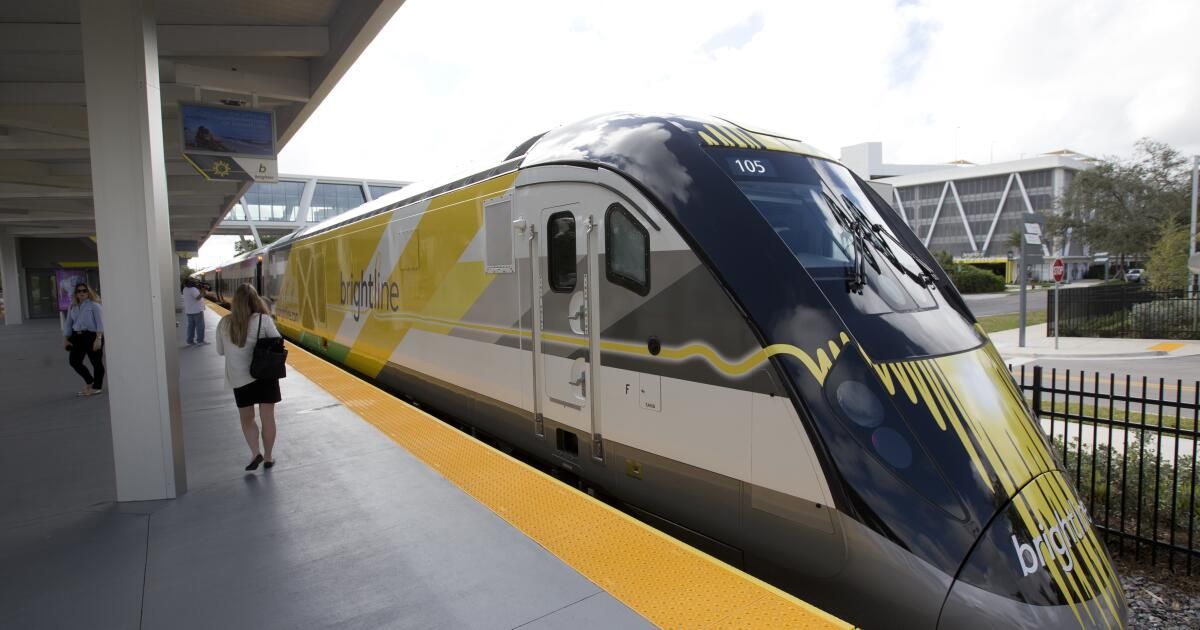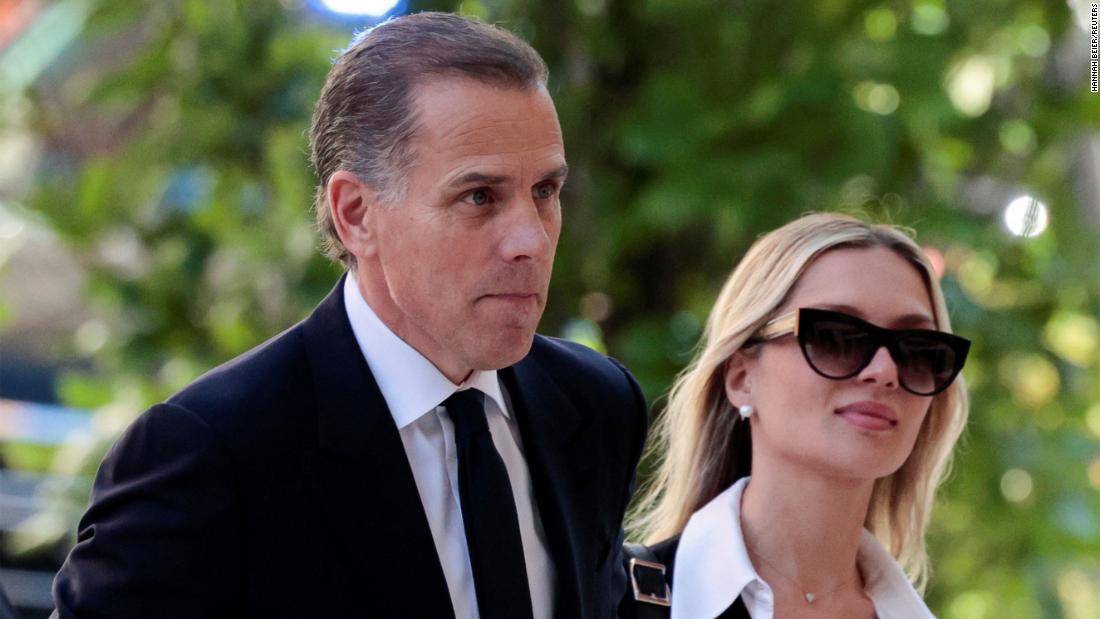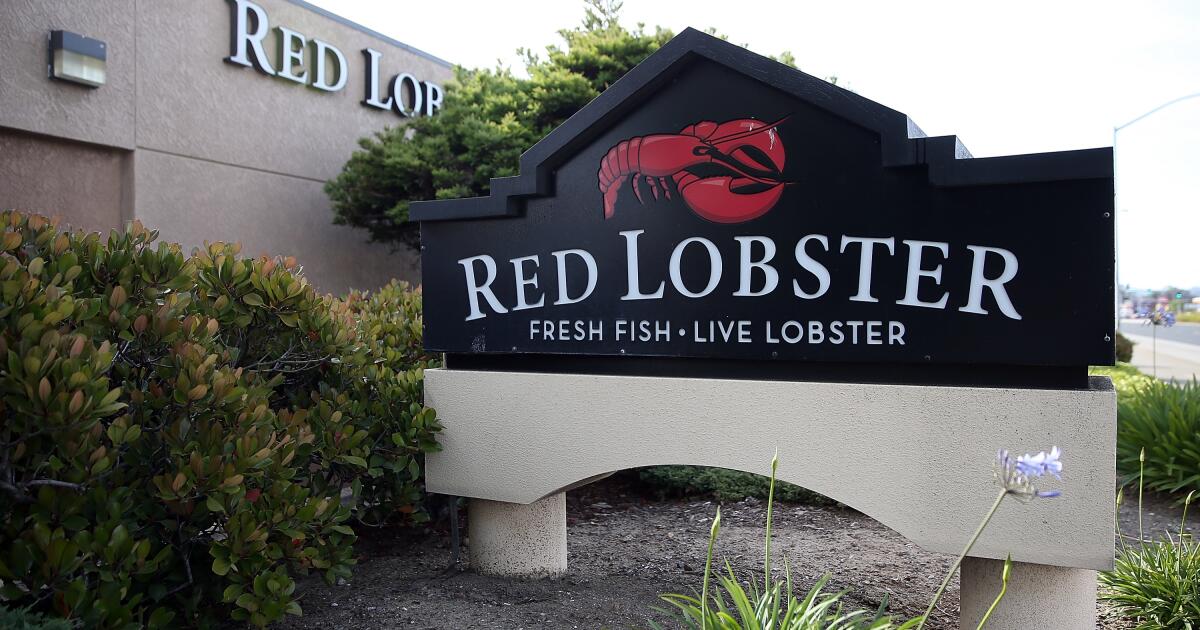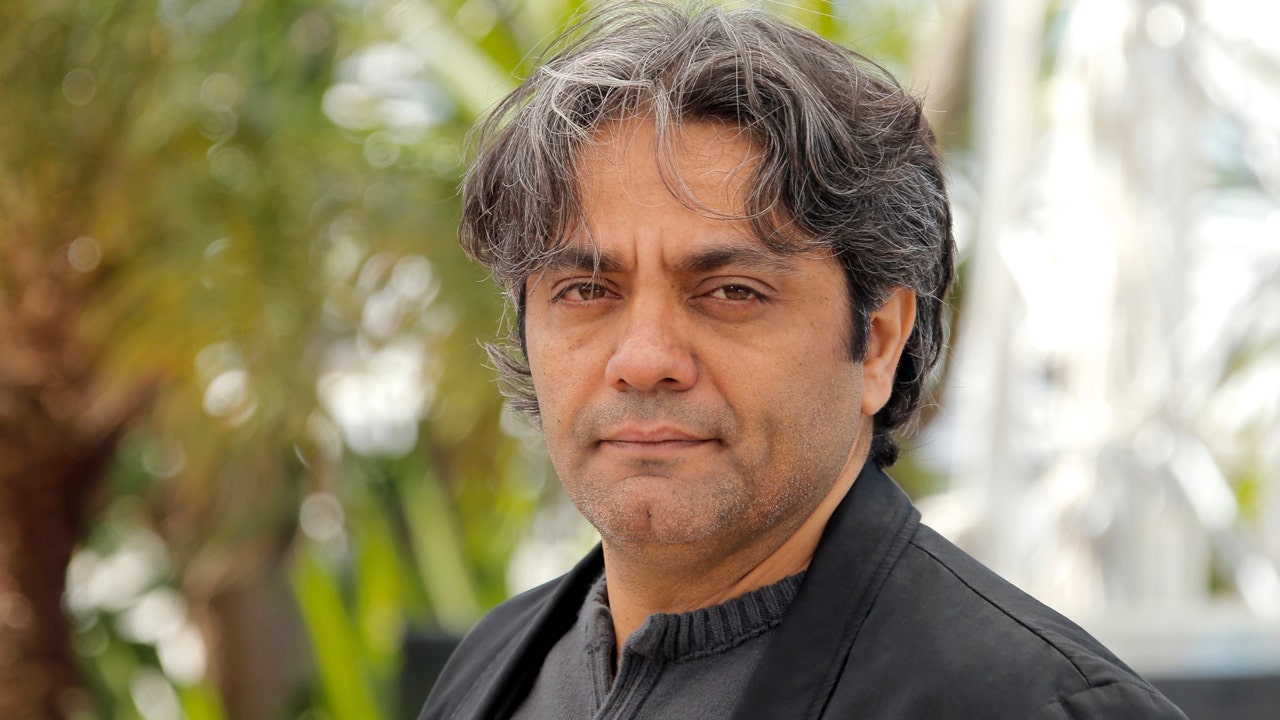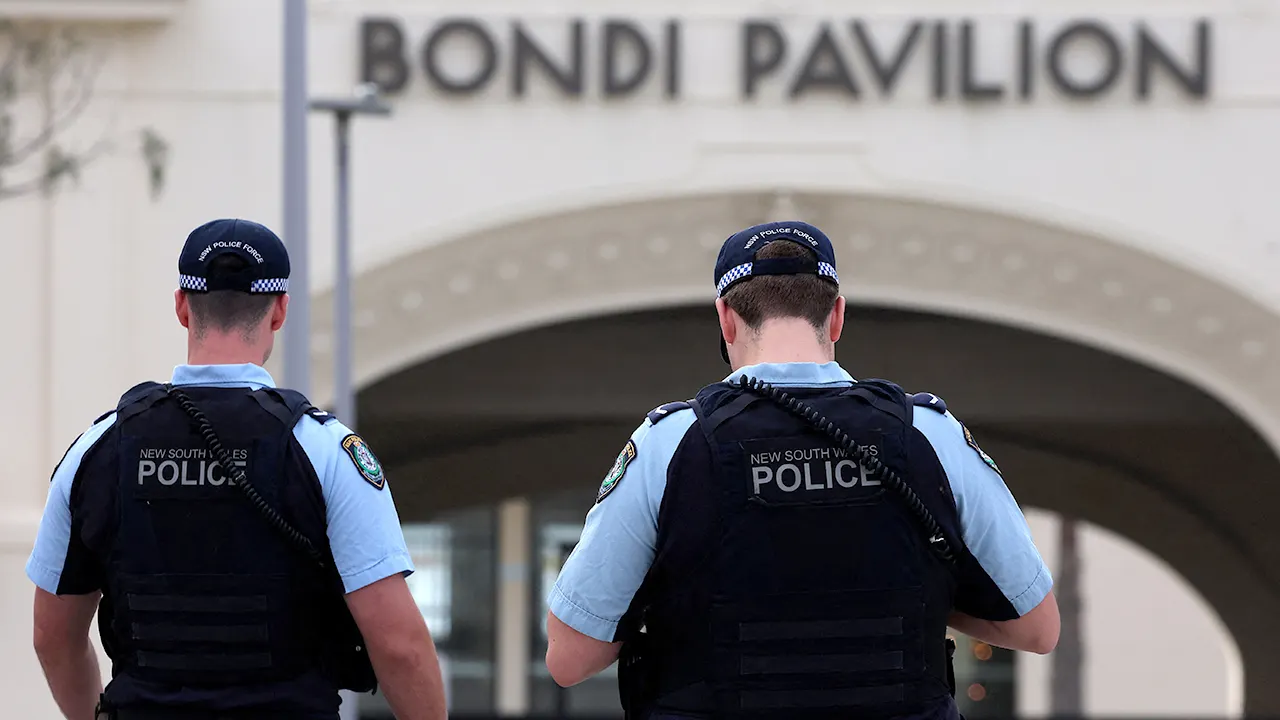The high-speed rail project between the Inland Empire and Las Vegas, scheduled for completion before the 2028 Olympic Games, continued to move toward completion with the approval of additional federal funds.
The proposed electric passenger rail, which won a $3 billion federal grant in December, got another boost Tuesday when the Biden administration approved $2.5 billion in tax-exempt bonds for the $12 billion project.
The 218-mile train ride from Rancho Cucamonga to Las Vegas will take more than two hours, with stops in Hesperia and Apple Valley, according to Brightline, the company behind the project.
Brightline completed a high-speed rail line between Orlando and Miami last year.
Trains on the new line will reach speeds of 200 mph. The company already has federal permits, labor agreements and the land (a strip in the wide median of Interstate 15) to build the line. Construction is expected to begin early this year.
The bond money will allow Brightline West to “lay tracks, create jobs and connect American cities,” as part of an effort “to build safe, green and accessible rail systems,” said US Transportation Secretary Pete Buttigieg.
Angelenos wishing to take service to and from Las Vegas will need to board at Rancho Cucamonga via the Metrolink commuter rail station in downtown Los Angeles.
Meanwhile, the state's infamous bullet train, which aims to connect Los Angeles and San Francisco, also recently received an additional $3.1 billion in federal grants late last year.
The first segment of that train is supposed to begin operating in 2030, and when fully completed, the bullet train will transport passengers from one city to another in less than three hours.
The first segment of the line, dubbed by critics as the “Train to Nowhere,” is 171 miles long and will connect Merced to Bakersfield. The train distance to Las Vegas is almost 50 miles longer and the deadline is tighter.
“As the first true high-speed rail system in America, Brightline West will serve as a model for connecting cities with fast, green passenger rail across the country,” Brightline founder and president Wes Edens said in a statement.
“Connecting Las Vegas and Southern California will provide broad public benefits to both states, create thousands of jobs and drive a new level of economic competitiveness for the region,” he said.
As California looks to electrify its grid and move away from fossil fuels, high-speed electric rail could help reduce transportation emissions, experts say. The state's budget shortfall has forced Gov. Gavin Newsom to make cuts, putting climate programs in the crosshairs.
The state will receive billions in federal funding for electrified rail projects, while Newsom's proposed 2024-25 budget is expected to cut nearly $3 billion from state climate programs and delay nearly $2 billion more.
Times staff writer Rachel Uranga contributed to this report.

